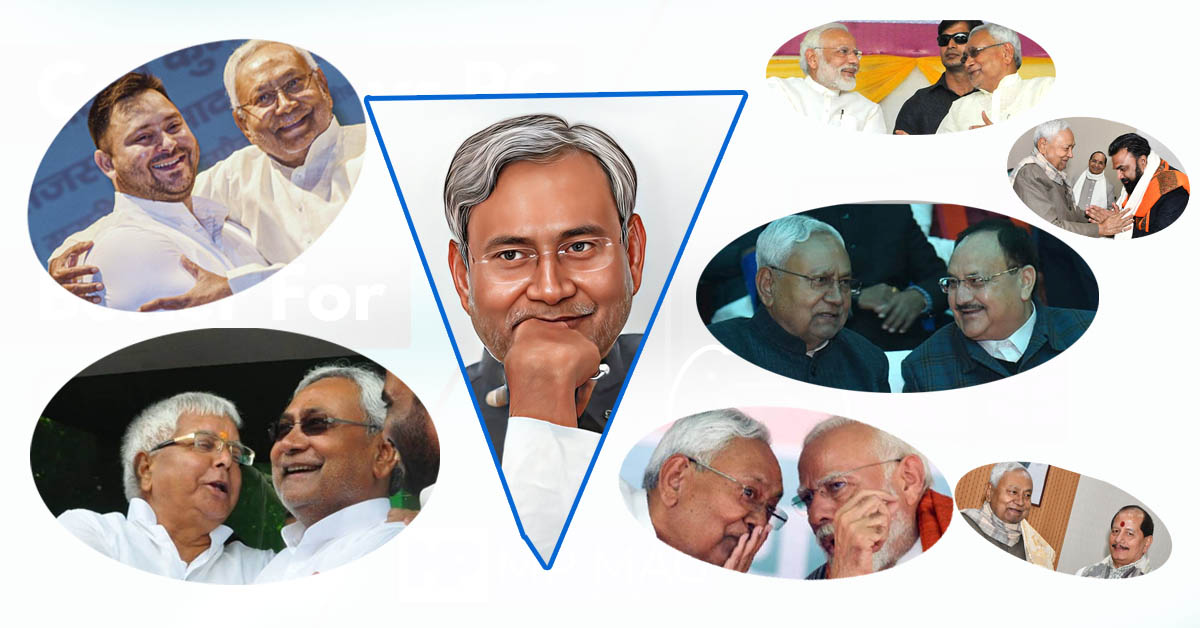Global media Update tech Update & Automobile Life Style & Entertainment

The intricate and often bewildering dynamics of Indian politics have long fascinated observers, and few alliances illustrate this better than the ongoing interplay between the Janata Dal (United) (JDU), Rashtriya Janata Dal (RJD), and Bharatiya Janata Party (BJP). These three key players in Bihar’s political landscape have been locked in a relationship that oscillates between partnership, rivalry, and outright hostility—a political love triangle that continues to reshape the state’s governance and electoral outcomes.


 Amazon: दुनिया का सबसे बड़ा ऑनलाइन शॉपिंग प्लेटफॉर्म, जहां आपको बेहतरीन डील्स और विश्वसनीय प्रोडक्ट्स मिलते
Amazon: दुनिया का सबसे बड़ा ऑनलाइन शॉपिंग प्लेटफॉर्म, जहां आपको बेहतरीन डील्स और विश्वसनीय प्रोडक्ट्स मिलते
The JDU, led by Nitish Kumar, and the BJP have shared a long and tumultuous history. The alliance, built on the foundation of mutual electoral benefits, has seen significant successes, particularly in Bihar’s assembly elections. Nitish Kumar’s leadership and the BJP’s organizational might formed a formidable combination that governed Bihar for years. However, ideological differences and the growing assertiveness of the BJP under Narendra Modi often strained this relationship. The first major rift came in 2013, when Nitish Kumar severed ties with the BJP, citing differences over Modi’s leadership.

Post-2013, Nitish Kumar sought new allies to sustain his political relevance. This led to the formation of the “Mahagathbandhan” (Grand Alliance) in 2015, bringing together the JDU, RJD, and Congress. This coalition marked a dramatic turn in Bihar politics, as Nitish joined hands with Lalu Prasad Yadav’s RJD—a party he had long opposed. The alliance swept the 2015 assembly elections, defeating the BJP-led coalition decisively. However, the partnership was short-lived, as Nitish Kumar’s discomfort with the corruption charges against RJD leaders led him to break away from the Grand Alliance in 2017.
Nitish Kumar’s return to the BJP-led National Democratic Alliance (NDA) in 2017 raised eyebrows. Critics accused him of opportunism, while supporters lauded his pragmatic approach to governance. This phase of the JDU-BJP alliance was marked by increasing tensions, particularly as the BJP’s growing dominance began to eclipse its smaller ally. The 2020 Bihar assembly elections further strained the relationship, with the BJP emerging as the larger partner in the alliance.

In August 2022, Nitish Kumar once again parted ways with the BJP, citing ideological differences and accusing the BJP of undermining his leadership. In a dramatic political twist, he rejoined hands with the RJD, forming a government with Tejashwi Yadav as his deputy. This move signaled a renewed effort to counter the BJP’s influence in Bihar and beyond, with both JDU and RJD emphasizing the need for opposition unity at the national level.

The relationship between JDU, RJD, and BJP can best be described as a web of contradictions. While alliances are often driven by electoral arithmetic and political expediency, the ideological gulf between these parties adds an element of unpredictability. The BJP’s Hindutva agenda clashes with the socialist and secular ethos of JDU and RJD. At the same time, personal rivalries and power struggles often overshadow broader ideological considerations.

The constant realignments among these three parties have significant implications for Bihar’s governance and development. Frequent changes in alliances disrupt policy continuity and create political instability. At the national level, the JDU-RJD partnership is seen as a potential blueprint for opposition unity against the BJP in the 2024 general elections. However, the sustainability of this alliance remains uncertain, given the history of mistrust and ideological differences.



The political love triangle involving JDU, RJD, and BJP underscores the complexities of coalition politics in India. It reflects the interplay of ideology, ambition, and pragmatism that shapes political decisions. As Bihar continues to witness this evolving saga, one thing is certain: the state’s political landscape will remain as unpredictable as ever, keeping both observers and voters on their toes
Auto Amazon Links: No products found.